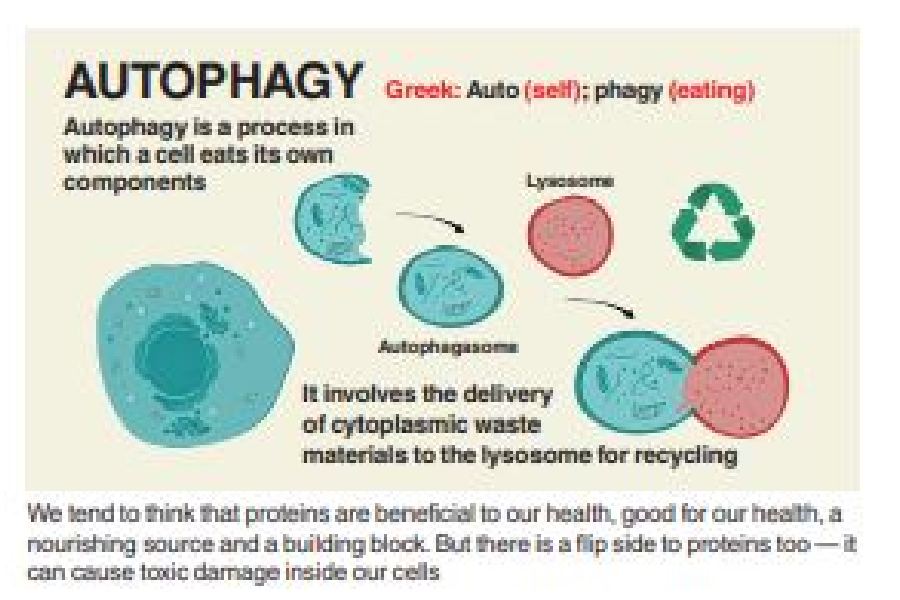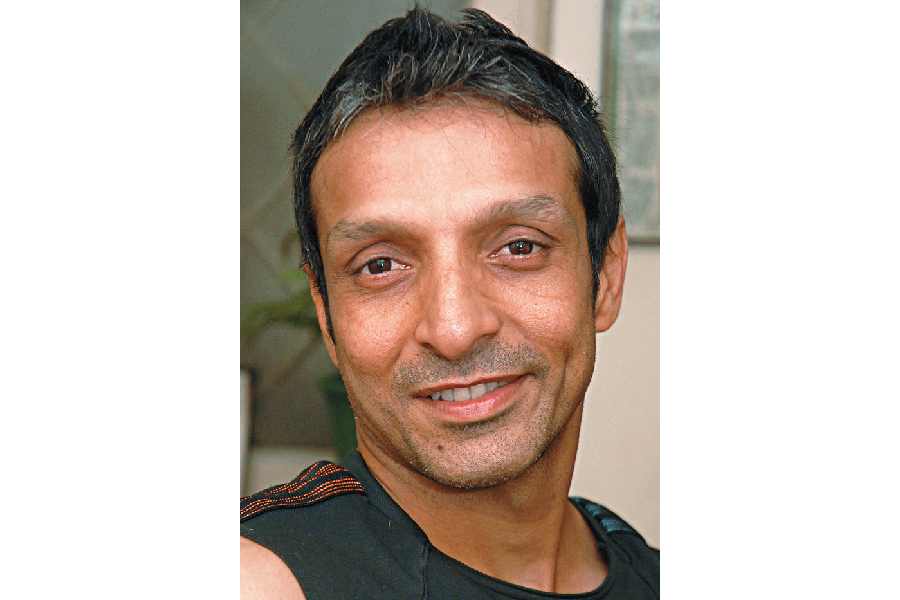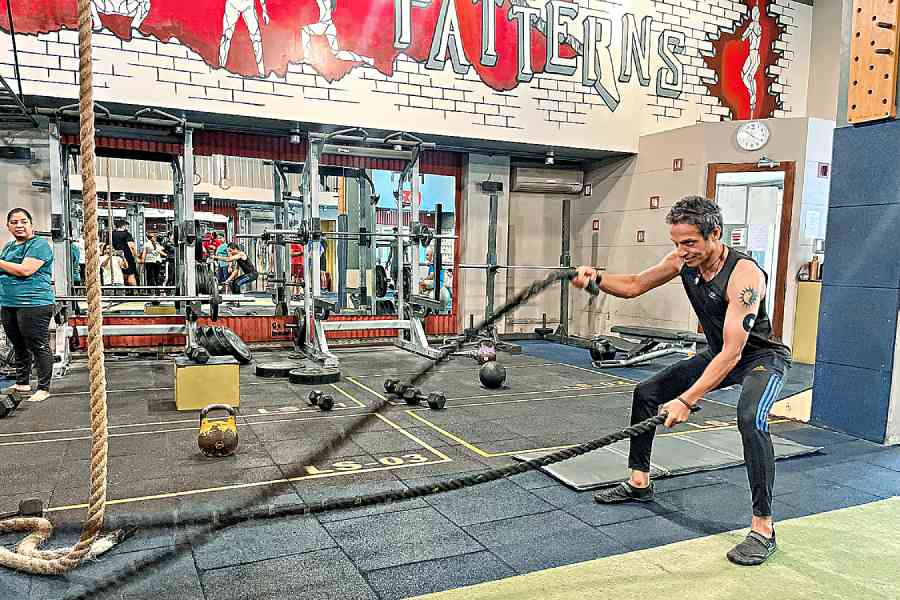Did you know that exercising for longevity is different from exercising for performance or body shaping or fat loss? If you are exercising incorrectly, relevant to your goals, you may not be able to reap the full benefits of exercise, including the benefit of enhancing longevity. Even if you are following the popular recommendations of how to exercise, it is possible to improve performance, lose fat, add muscle and improve metabolic health without activating the full power of exercise for longevity.
So, to keep your muscles young, your brain sharp, and your heart lively, you must exercise with purpose, with the intention to keep longevity in mind. The major longevity benefit that exercise activates is autophagy. The way to achieve longevity is to activate a dormant mechanism in your body called autophagy.
What is autophagy?
Autophagy is a hot topic in the longevity community today. Activating autophagy will not only help you to stay young but also protect you from cognitive degeneration and losing your memory with age. It may even contribute towards preventing the development of Alzheimer’s later in life.
Autophagy is derived from the Greek language and means “self-devouring”. It is a process by which the body feeds on any toxic proteins within the body and prevents their accumulation. Autophagy is part of the survival programme in every cell of our body — whenever the body is deprived of food for long hours, it tends to resort to autophagy to keep itself going.
We tend to think that proteins are beneficial to our health, good for our health, a nourishing source and a building block. But there is a flip side of proteins too — it can cause toxic damage inside our cells. We call it protein aggregates. These toxins are a major cause of ageing and they lead to many diseases when accumulated within the cell. These toxic proteins are particularly dangerous for the brain and nervous system. Our brains would deteriorate if the body is unable to recycle these “protein aggregates”. By activating autophagy within the cell, the body scavenges on these toxic proteins and increases the life of the individual cell.
What tissues are more autophagy dependant than others?
Tissues like the brain are very sensitive to autophagy. Other tissues like the lungs, for example, are not so sensitive. The brain depends on autophagy to remain healthy and function efficiently. The brain is the most dependent organ in the body, in the sense that it absolutely needs autophagy to survive.
So what does that mean?
It means that if you care about arresting cognitive and mental decline with age, you need autophagy. Inducing autophagy within the cell could be a potent

Regular and appropriate exercise can strengthen immune system functions
means to prevent Alzheimer’s disease with age. Preventing Alzheimer’s definitely improves your chances of longevity since it is one of the four big killers in our society.
According to Dr David Sinclair, a world-renowned authority on autophagy, there are two stressors that help to induce autophagy — starvation (fasting) and exercise. A recently published book called Exercise, Autophagy and Chronic Diseases, edited by Ning Chen, says about exercise and autophagy: “Recent studies have demonstrated that appropriate exercise can activate autophagy as an essential and evolutionarily conserved intercellular dynamic mechanism for maintaining metabolic and energetic stability in skeletal muscle cells, and plays a critical role in the timely removal and recycling of aggregated metabolic wastes from the cytoplasm or ageing or damaged cellular organelles.”
The book says that exercise could be a more potent and powerful weapon for enhancing longevity than even fasting. “Regular and appropriate exercise can strengthen immune system functions, enhance cellular homeostasis, and stimulate the production and secretion of exerkines, thus effectively preventing the occurrence and development of chronic diseases.”



However, as mentioned earlier, random exercise protocols will not induce autophagy and enhance longevity. In order to target the autophagy mechanism through exercise, we have to be very specific in our execution. There are two ways in which exercise activates autophagy. The first is called hypoxia. The word hypo means less and hypoxia literally means less oxygen. Hypoxia describes a physiological state when there are very low levels of oxygen content inside the cell. This is achieved when the body reaches a state of hyperventilation characterised by a high pulse rate, high cardiac volume and cardiac output as experienced by the body during sprinting and high-intensity exercise. The target then to activate autophagy is to create oxygen deficiency within the cell.
How do we create oxygen deficiency in the cell to infuse autophagy? Simple. Just exercise intensely!
With intense cardiovascular exercise, oxygen levels within the cell plummet. The frequency and depth of our breathing increase; the lungs are struggling to provide enough oxygen to the working muscles. This demand for oxygen is coming directly from the cells and causing heart beat to go up. (We typically consider 220 minus age as the max heart rate. Top-level athletes are known to train close to their max heart rate.) The physiological phenomenon of the heart struggling to supply oxygen to the cells is referred to as hypoxia — the heart struggling to provide enough blood and oxygen to the cells. At the same time, the body is also coping with the request to remove carbon dioxide from the cells.
In contrast, when you go for a leisurely walk or even a jog around the park, your heart rate remains comparatively quite low (typically between 40-50 per cent of max heart rate) and you breathe easier. This suggests no hypoxia at all. By observing your breathing and heart rate during exercise, one can easily predict whether your cells have reached hypoxia and the more intense the exercise is, the less oxygen you are able to deliver to your cells and the higher the activation of autophagy. This is great for longevity.
Cycling oxygen levels
Dr David Sinclair suggested that alternating oxygen levels within the cells is the best longevity strategy. High-intensity Interval Training (HIIT) is the best methodology for alternating levels of oxygen within the cells. HIIT typically involves doing multiple sets of high-intensity exercises interspaced by short intervals of rest between such sets. The heart rate shoots up during the working sets and comes down during the rest period. This ensures cycling the level of oxygen within the cells for a period of 20 to 40 minutes. Dr Sinclair puts it really simply: “Going up and down (in oxygen levels) once is not as good as going up and down, up and down.”
What is “intensity”?
Intensity is the actual amount of stress that you expose your muscles, bones, heart and lungs to during exercise. Exercise intensity is controlled by three parameters: Speed Resistance Time under tension
Let’s address speed first. When running, you primarily use your leg, heart and lung muscles. If you pick up the pace a bit, it increases the load (intensity) on those organs and muscles. You can push as long as your muscles and cardiorespiratory system allow you to before hyperventilating to momentary fatigue and failure. The response to stop running or slowing down is involuntary rather than based on voluntary choice.
If we carried a bag or heavy log on our back, for instance, and ran, the additional weight would be referred to as resistance. An inclined surface could be one more method to add more resistance as your body has to resist the additional pull of gravity.
Time under tension typically refers to the total time that the body is put under this muscular and cardiorespiratory stress.
You can apply these principles to any exercise you are doing right now to increase the intensity. A study done on 416,175 Chinese people in 2011, tracking them for 13 years, seems to indicate that intense exercise leads to the greatest longevity benefits with reduced mortality. (Refer: Minimum amount of physical activity for reduced mortality and extended life expectancy: a prospective cohort study.)
Dr James O’ Keefe (cardiologist and medical director of the Charles and Barbara Duboc Cardio Health and Wellness Centre at Saint Luke’s Mid-America Heart Institute; he is a professor of medicine at the University of Missouri-Kansas City) presents the findings of the above study where he lists the benefits of both moderate and intense exercise but where longevity and mortality are concerned, vigorous exercise scores over moderate exercise.
Exercise caution
While intense exercise is a great longevity tool, one must be careful not to over-exercise. Over-exercising will hurt the body’s repair mechanism and cause permanent cell damage or cell death. This death is called “apoptosis”. Muscle cells can either survive by activating autophagy or die as a response to over-training stress. Cells cannot do both. They have to choose. According to a study done in 2015 called ‘Exercise, Autophagy, and Apoptosis’: “Exercise is a form of physiological stress which is known to induce an adaptational stress.” The benefits of longevity that come with exercise are a form of adaptation. However, if the muscle cells cannot repair the damage caused by exercise, it will cause the cells to die out.

Ranadeep Moitra is a strength and conditioning specialist and corrective exercise coach
